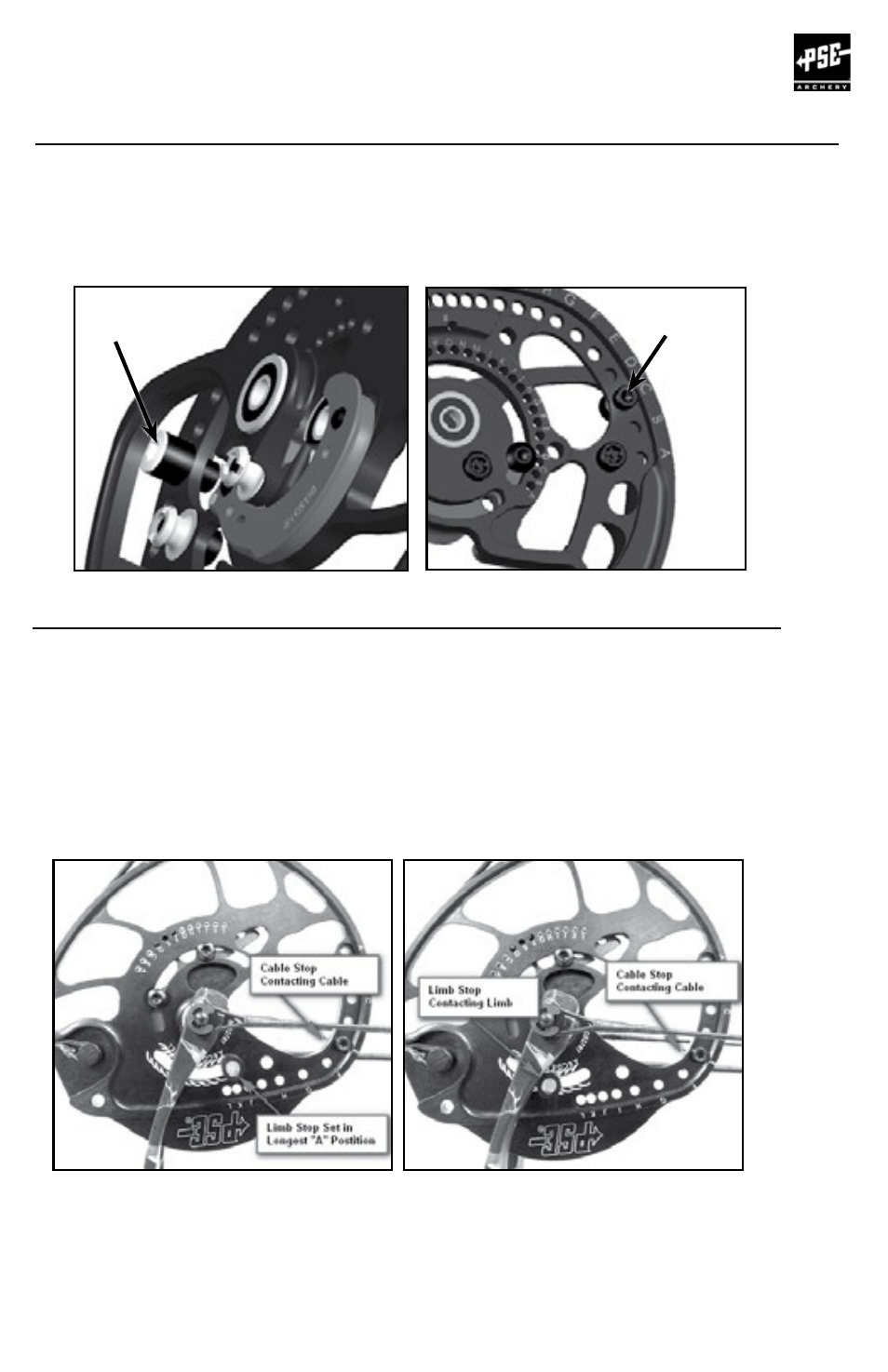Limb stop adjustments, Information on draw stop adjustments, Compound bow – PSE Archery Compound Bow 2015 User Manual
Page 16

COMPOUND BOW
USER’S GUIDE
PAGE
17
Positioning Pin
INFORMATION ON DRAW STOP ADJUSTMENTS:
The position of the draw stop must match the setting on the inner-cam. For example, if the cam is set on “E”, the draw
stop must be placed in one of the draw stop holes marked with an “E”. If the inner-cam is in the “B” setting, the stop
must be in the “B” position. Certain hybrid cams have top and bottom stops. They can be shot with both stops for a
harder “wall” or with only the top stop for a softer “wall”. Never shoot hybrid cams with the two stop option with only the
bottom stop. In either case, the stops need to be in the holes marked with the same marking as the inner-cam setting.
Draw Stop
Draw Stop
Screw
LIMB STOP ADJUSTMENTS
On bows equipped with a limb stop and cable stop, use of the limb stop is optional. If
choosing not to use the limb stop it may be removed or set in the longest “A” position so
that it does not contact the limb before the cable stop. Engraving for limb stop positions is
approximate and for reference only. Many factors will cause changes to the optimum limb
stop position.
OPTION 1: (If a safe method of holding the bow at full draw is available, such as a draw
board) Set Limb Stop to the Longest “A” Location and time bow to cable stops at desired
draw length as shown in Figure 1. Using a safe method to hold the bow at full draw adjust
limb stop so it contacts the limb as shown in Figure 2.
OPTION 2: Set Limb Stop to the Longest “A” Postition. Time bow to cable stops at desired
draw length.Set Limb stop to the corresponding stop position. Draw bow with an arrow,
pointed at a safe range or target and observe whether the cable stop or Limb Stop contacts
first. Make small adjustments to the Limb Stop position and recheck until it contacts at
the same time as the cable stop.
FIGURE 2
FIGURE 1
